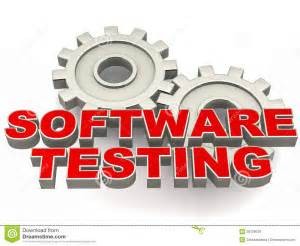 21. Which of the following is the main purpose of the integration strategy for integration testing in the small?
21. Which of the following is the main purpose of the integration strategy for integration testing in the small?
The main purpose of the integration strategy is to specify which modules to combine when and how many at once.
22. What are semi-random test cases?
Semi-random test cases are nothing but when we perform random test cases and do equivalence partitioning to those test cases, it removes redundant test cases, thus giving us semi-random test cases.1 test for statement coverage, 2 for branch coverage
23. What is black box testing? What are the different black box testing techniques?
Black box testing is the software testing method which is used to test the software without knowing the internal structure of code or program. This testing is usually done to check the functionality of an application. The different black box testing techniques are :
Equivalence Partitioning
Boundary value analysis
Cause effect graphing
24. Which review is normally used to evaluate a product to determine its suitability for intended use and to identify discrepancies?
Technical Review.
25. Why we use decision tables?
The techniques of equivalence partitioning and boundary value analysis are often applied to specific situations or inputs. However, if different combinations of inputs result in different actions being taken, this can be more difficult to show using equivalence partitioning and boundary value analysis, which tend to be more focused on the user interface. The other two specification-based techniques, decision tables and state transition testing are more focused on business logic or business rules. A decision table is a good way to deal with combinations of things (e.g. inputs). This technique is sometimes also referred to as a ’cause-effect’ table. The reason for this is that there is an associated logic diagramming technique called ’cause-effect graphing’ which was sometimes used to help derive the decision table
26. Faults found should be originally documented by whom?
By testers.
27. Are there more defects in the design phase or in the coding phase?
The design phase is more error prone than the execution phase. One of the most frequent defects which occur during design is that the product does not cover the complete requirements of the customer. Second is wrong or bad architecture and technical decisions make the next phase, execution, more prone to defects. Because the design phase drives the execution phase it’s the most critical phase to test. The testing of the design phase can be done by good review. On average, 60% of defects occur during design and 40% during the execution phase.
28. What are the Experience-based testing techniques?
In experience-based techniques, people’s knowledge, skills and background are a prime contributor to the test conditions and test cases. The experience of both technical and business people is important, as they bring different perspectives to the test analysis and design process. Due to previous experience with similar systems, they may have insights into what could go wrong, which is very useful for testing.
29. What type of review requires formal entry and exit criteria, including metrics?
Inspection
30. Could reviews or inspections be considered part of testing?
Yes, because both help detect faults and improve quality.To test a function, what has to write a programmer, which calls the function to be tested and passes it test data.